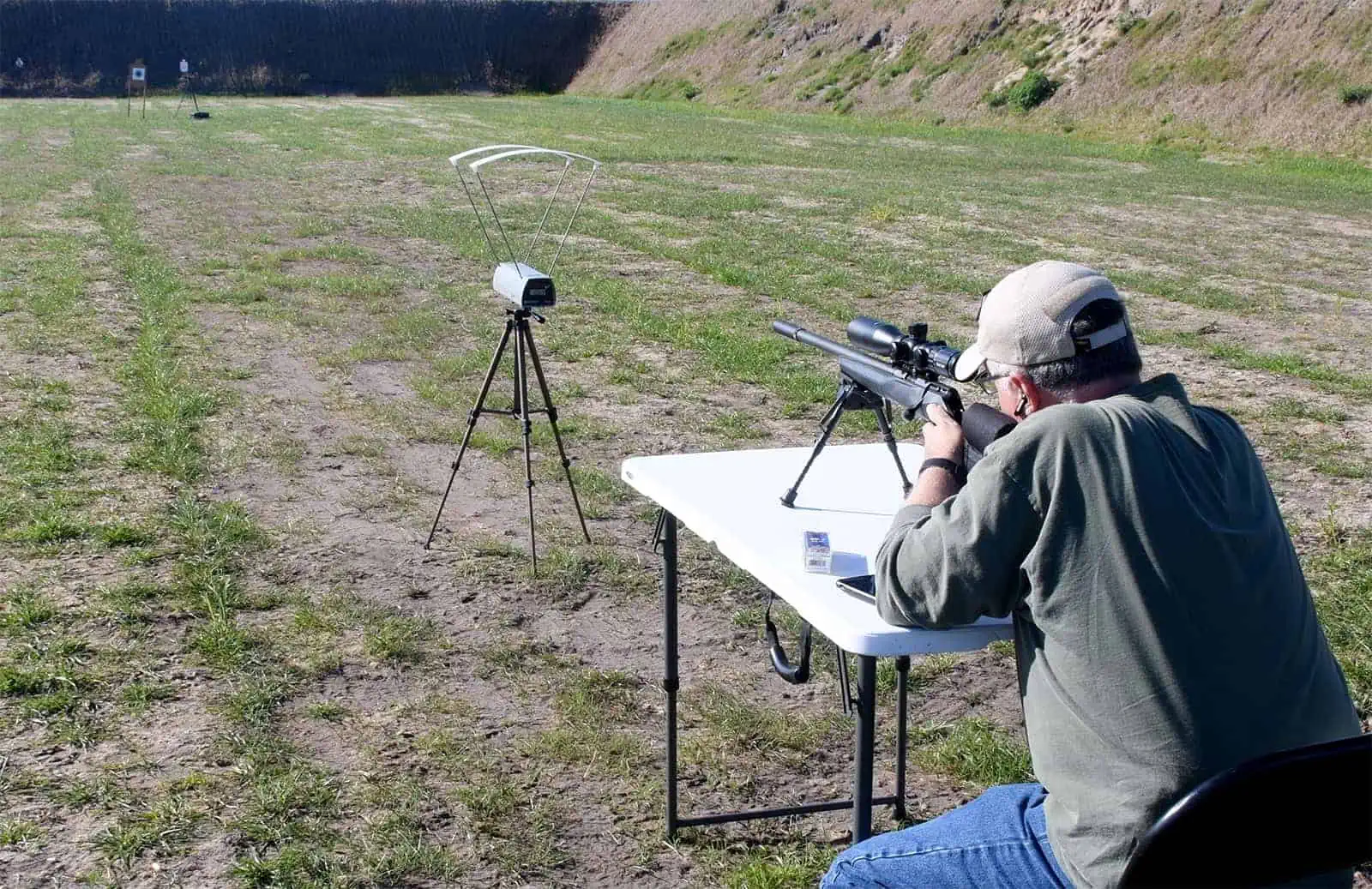Putting Subsonic Ammo To The Test
We’ve all heard the phrase “faster than a speeding bullet, but just how fast is a speeding bullet, anyways? Gun owners are very familiar with the sounds of a gunshot, but what sound does the bullet itself make as it heads downrange? You may own a suppressor, but what impact does the noise of the bullet in flight have on the noise of your shots? Let’s look at how subsonic ammo can answer all those questions.
First, a brief excursion into basic physics. The amount of force projected by any given bullet headed downrange is a function of the bullet’s velocity and weight. Factory-made ammunition conforms to standards laid out by SAAMI, the Sporting Arms and Ammunition Manufacturer’s Institute, which standardizes the specifications for any given type of ammo. This means that any given caliber can only produce so much force when it’s fired. Want more oomph? Fire a more powerful cartridge, and take the hit in noise and recoil as well.
Because the power of any given round is more or less set by the SAAMI standard, ammo manufacturers use lighter or heavier bullets to vary the velocity of their ammunition (Force = Mass x Acceleration: It’s not just a good idea, it’s the law!). The question then becomes, why would ammo manufacturers want to make slower rounds, such as subsonic ammo? Isn’t fast always better?
Slow(er) And Steady Wins The Race
Not necessarily. Let’s look at two reasons to use subsonic ammo in your firearm. The first is with a suppressor. A suppressor (or silencer, as they were originally called) is essentially a muffler that you put on the front of your gun. A suppressor reduces the noise from your gun by slowing down the escaping gases that are pushing the bullet out of the barrel. It also dampens the noise of the muzzle blast. However, it has no effect on any noise that the round itself makes as it heads downrange.
The second reason to use subsonic ammo has to do with the motion of a bullet through the air. Objects travelling near or above the speed of sound create a shockwave of compressed air in front of them. There is a loud crack when they break through that shockwave that we call a sonic boom, and it makes a lot of noise. Bullets are stable and predictable, by and large, when they travel supersonic. Things get weird when they start to slow down because of wind resistance and pass back through the shockwave of the sound barrier. Moving through all that compressed air affects the flight of the bullet, and it starts to tumble, throwing the round off-course and away from the intended target.
Why Use Subsonic Ammo?
In short, subsonic ammo is ideal for situations where you don’t want your ammunition to make more noise than the sound of your gun firing. It’s also useful in competitions such as Precision Rifle matches. It’s quite common at a Precision Rimfire match to see targets beyond where a standard .22LR round slows down and is no longer subsonic and starts to veer off target. Subsonic ammo is very useful when shooting 22LR at longer ranges because it allows your bullet to remain ballistically stable at ranges where supersonic ammo would slow down and start to tumble. This is why you’ll see that most, if not all, 22LR match ammo is subsonic, and does not break the sound barrier when fired.
With that in mind, let’s compare what subsonic ammo does compared to ammo that goes faster than the speed of sound. We’ll shoot one type of supersonic ammo and one subsonic ammo in three different calibers. To reduce effects of the noise of the muzzle blast from the equation, each of the guns will use a suppressor. The guns we’ll be shooting are a 300 Blackout pistol with a Sig Sauer suppressor, a 9mm Glock 19 with an Omega-K suppressor, and a Savage bolt-action 22 rifle with a CMMG suppressor.
Testing Subsonic Ammo
We’ll be shooting and comparing five rounds each of the following ammo:
Prvi Partizan 125 grain 300BLK FMJ supersonic
Sellier & Bellot 200 grain 300BLK subsonic
Winchester 124 grain 9mm NATO FMJ supersonic
Prvi Partizan 158 grain 9mm FMJ subsonic
CCI Mini-Mag 40 grain 22LR supersonic
Wolf Match 40 grain 22LR subsonic
We’ll also measure the velocity of each round by using a digital chronograph placed 10 feet away from the muzzle of our guns. This will help us determine if each round did in fact travel at supersonic or subsonic speeds. We will use a Larson-Davis LXT1-QPR sound meter to measure the noise of each round as it passes through the target. The meter will be placed one yard beside a target that is 55 yards away from the shooting position, similar to the setup that Larson-Davis recommends for firearms noise testing.
The conditions on our test day were as follows:
Temperature: 61 degrees F
Height: 30 feet above sea level (hey, it’s Florida…),
Humidity: 72% (Did I happen to mention Florida?)
In those conditions, the speed of sound turns out to be 1118.2 fps, or 762 mph. Let’s see how each type of ammo did.
Subsonic Ammo Test Results
Prvi Partizan 300BLK Supersonic (5 shots)
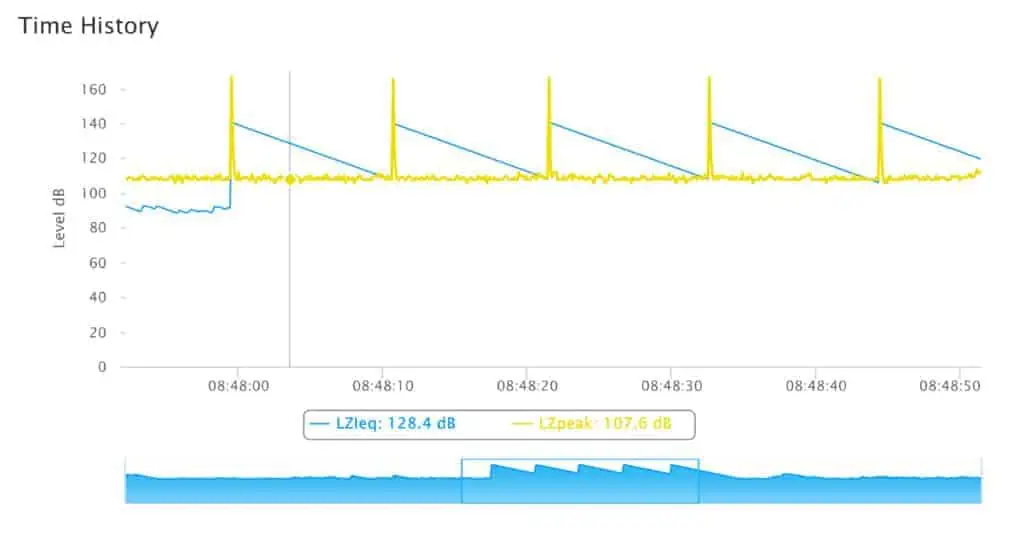 Average Velocity: 1979 fps / 1349.5 mph
Average Velocity: 1979 fps / 1349.5 mph
Minimum Velocity: 1912 fps / 1303 mph
Maximum Velocity: 2020 fps / 1377 mph
Average Peak db: 166 db
Minimum Peak db: 166.7 db
Maximum Peak db: 165.3 db
Sellier & Bellot 300BLK Subsonic (5 shots)
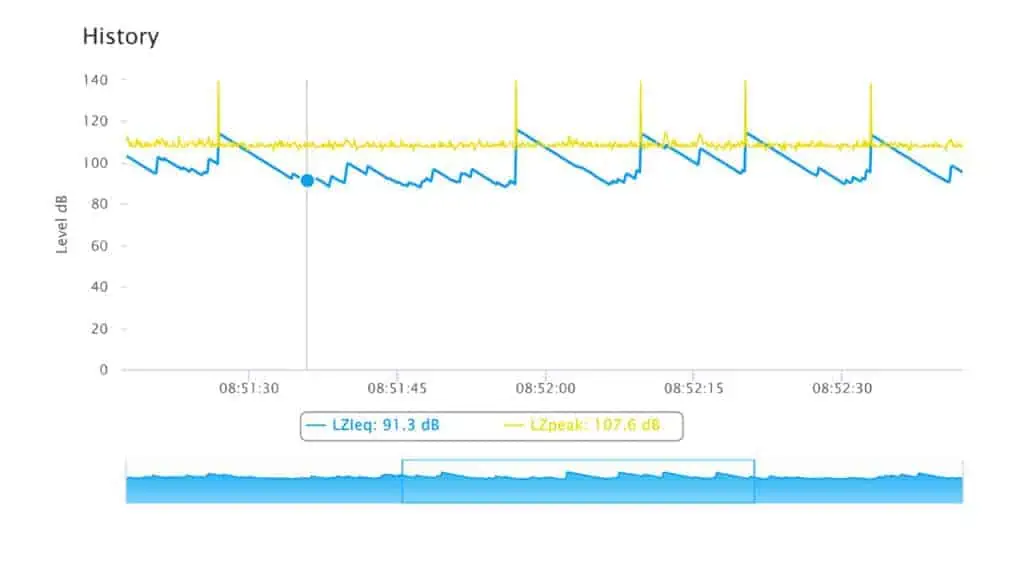
Average Velocity: 898 fps / 612.3 mph
Minimum Velocity: 834 fps / 568.6 mph
Maximum Velocity: 986 fps / 672.3 mph
Average Peak db: 139.8 db
Minimum Peak db: 138 db
Maximum Peak db: 142.8 db
Winchester 9mm Supersonic (5 shots)
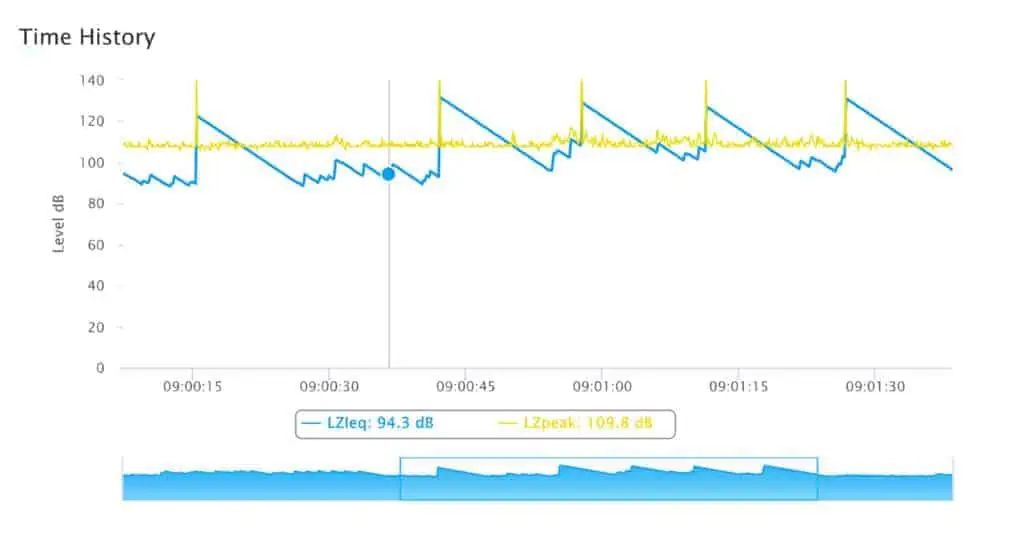 Average Velocity: 1226 fps / 836 mph
Average Velocity: 1226 fps / 836 mph
Minimum Velocity: 1204 fps / 820.9 mph
Maximum Velocity: 1248 fps / 850.9 mph
Average Peak db: 154.8 db
Minimum Peak db: 158.1 db
Maximum Peak db: 153.6 db
Prvi Partizan 9mm Subsonic (5 shots)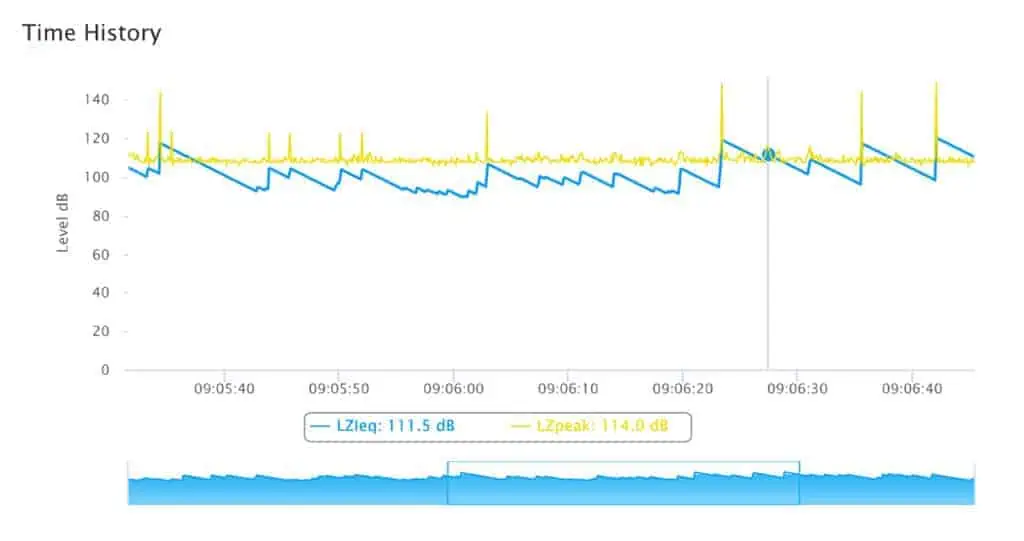 Average Velocity: 944 fps / 643.9 mph
Average Velocity: 944 fps / 643.9 mph
Minimum Velocity: 922 fps / 628.6 mph
Maximum Velocity: 958 fps / 653.2 mph
Average Peak db: 143.8 db
Minimum Peak db: 133.6 db
Maximum Peak db: 149 db
CCI Mini-Mag 22LR Supersonic (5 Shots)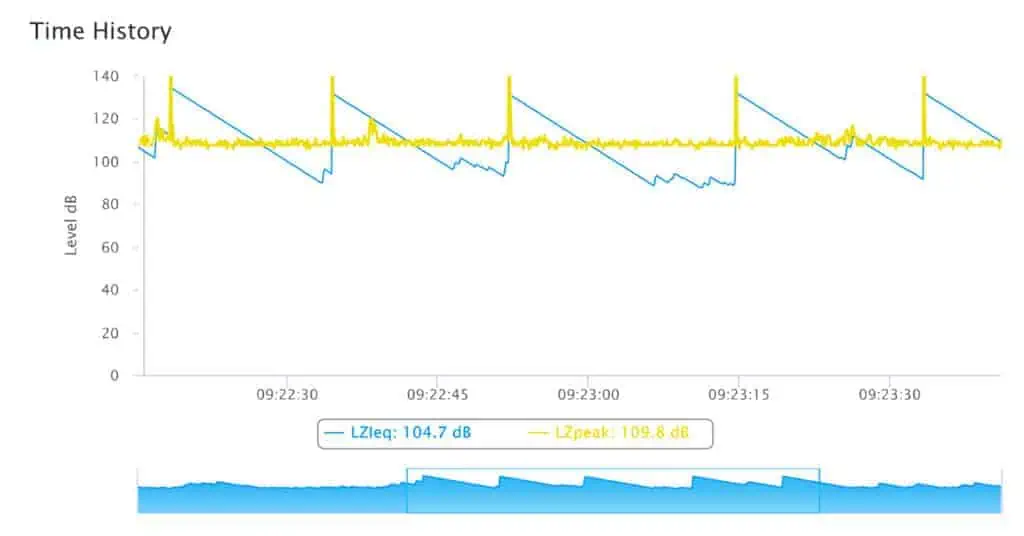 Average Velocity: 1226 fps / 836 mph
Average Velocity: 1226 fps / 836 mph
Minimum Velocity: 1204 fps / 820.9 mph
Maximum Velocity: 1248 fps / 850.9 mph
Average Peak db: 154.8 db
Minimum Peak db: 158.1 db
Maximum Peak db: 153.6 db
Wolf Match 22LR Subsonic (5 shots)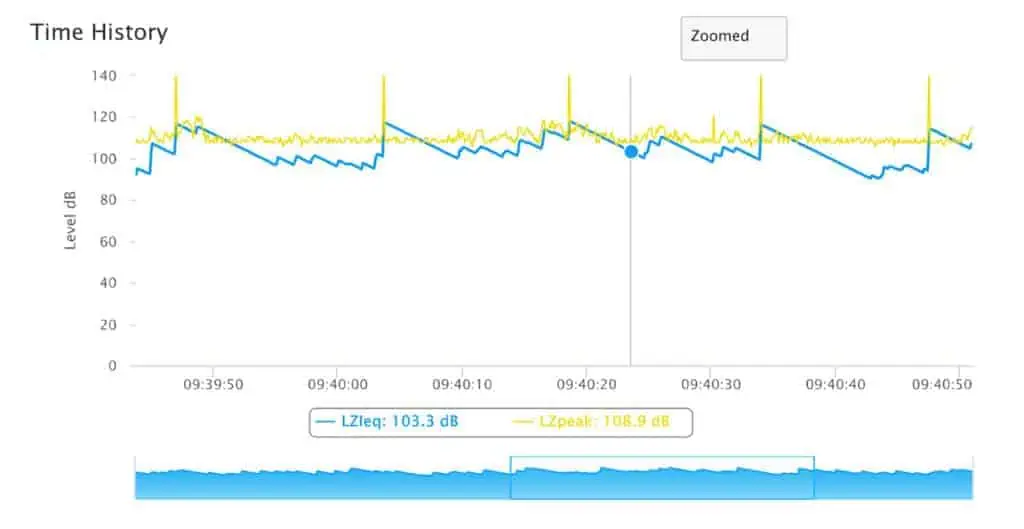 Average Velocity: 1067 fps / 727.7 mph
Average Velocity: 1067 fps / 727.7 mph
Minimum Velocity: 1041 fps / 709.8 mph
Maximum Velocity: 1041 fps / 741.8 mph
Average Peak db: 144.4 db
Minimum Peak db: 146.2 db
Maximum Peak db: 141.1 db
There Was Supposed To Be An Earth-Shattering Kaboom!
All of the subsonic ammo in our test averaged around 142 decibels, which is right in-line with testing done by Larson-Davis themselves. As a comparison, 142 db is about the same level as a firecracker going off, and that level of noise can harm your hearing. However, it’s important to note that the 142 db was recorded by a sound meter placed just one yard away from the path of each bullet.
However, in the real world, we are not going to be one yard away from where the bullet is flying past us (at least I hope that is the case). Using subsonic ammo in a suppressed firearm makes very little perceivable noise. In fact, when we were testing the 22 subsonic rounds, the loudest noises we heard was the click of the firing pin hitting the back of the chambered round and the “thwack” of the bullet impact downrange.
More Noise Means More Hearing Damage
The 150 to 160 decibels from the supersonic ammo, is a big deal. Anyone who’s ever shot an unsuppressed firearm without hearing protection knows the ringing in the ears it causes, which is an indication that a serious hearing injury is headed your way. This is why we wear hearing protection at the range. After all, staying safe while shooting a firearm means keeping all of your body safe, including your hearing.
Subsonic ammo is not for everyone or for every situation. However, if you regularly use a suppressor or shoot 22LR at 100 or more yards, subsonic ammo is probably a good idea. Take your gun to the range and enjoy the shooting sports in a quieter sort of way.


